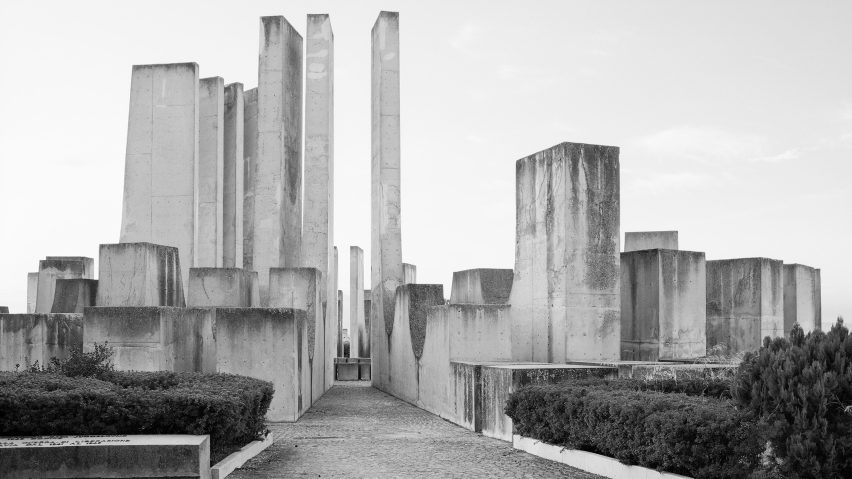Belgian photographer Jan Kempenaers has documented a series of second world war memorials across Europe, from a neglected lattice-wrapped library to the star-shaped entrance to a fortress.
Like the photographer's Spomenik series, The Untitled photoset focuses on a series of ruined concrete monuments built in the 1960s and 70s across the former Yugoslavian territories.
This time, Kempenaers has also included structures in Germany and France, showing them in black and white.
Among the series is a library located in Pristina, the main city of Kosovo in southeastern Europe, which is encased in a lattice structure and features a weathered ramp.
The entrance to the Brest fortress in Belarus is also included. The structure, which was maintained as a memorial to a German invasion in 1941, features sharp angular walls that make a star-shaped opening.
The monument to Stjepan Filipovi shows the heroic figure of the Partisan army in modern-day Serbia in the resistance pose before being captured by the invading German army.
Kempenaers has also captured a wedge of concrete that splits open to support a circular volume, which has steps leading to a doorway on the underside.
Other monuments include a collection of mirrored cylinders set of a platform of marble and a structure made of fluted and lined wood-formed concrete looks like a large flower.
The photoset is currently on show at London's Breese Little gallery, which opened yesterday and will run until 20 May 2017. The exhibition, the photographer's third solo show at the gallery, is accompanied with an essay by writer and curator Brian Dillon.
It is not the first photography series to investigate the topic of Soviet architecture.
Other examples include BACU's images of buildings in the former Eastern Bloc, Rebecca Litchfield's documentation of monumental structures, Nicolas Grospierre's photographs of modernist architecture across five continents.
Photography is by Jan Kempenaers, courtesy Breese Little.

